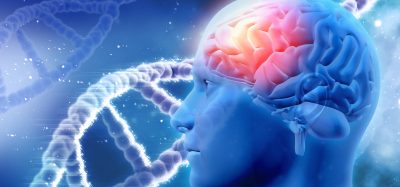Specific HERV expression signatures linked to MS and ALS
Posted: 22 October 2024 | Drug Target Review | No comments yet
The study identified which specific HERVs are important in increasing susceptibility for neurodegenerative diseases.


Scientists at King’s College London and Northwell Health have discovered a link between ancient viral DNA within the human genome and the genetic risk for two significant neurodegenerative diseases: multiple sclerosis (MS) and amyotrophic lateral sclerosis (ALS).
Human endogenous retroviruses (HERVs), remnants of ancient retroviral infections that are now fixed features within our DNA were the focus of the new study. By using an advanced genomic technique, the researchers found specific HERV expression signatures, which indicate that viral elements within our DNA may influence the development of these neurodegenerative diseases. This is one of the first studies to pinpoint specific HERVs that are associated with disease susceptibility.
Complex neurodegenerative diseases
MS is amongst the most common neurodegenerative diseases. Commonly affecting young adults and females, over 1.8 million people worldwide live with the condition.1 Although ALS is less common, it is associated with a more severe prognosis.
Dr Rodrigo R. R. Duarte, co-lead author of the study and Research Fellow at the Institute of Psychiatry, Psychology (IoPPN) at King’s College London, commented: “Our findings offer robust evidence that specific viral sequences within our genome contribute to the risk of neurodegenerative diseases…These sequences are not just static fossils derived from ancient viral infections—they must be actively influencing brain function in ways we are only beginning to understand.”
HERV expression
The team analysed data from hundreds of brain samples to understand the relationship between HERV expression and genetic risk factors for Parkinson’s disease (PD), Alzheimer’s disease (AD), ALS and MS.
A robust HERV signature on chromosome 12q14 (MER61_12q14.2) was observed, associated with ALS, and another on chromosome 1p36 (ERVLE_1p36.32a), associated with MS. Both of these viral sequences appear to be involved in homophilic cell adhesion. Despite no robust signatures being observed for AD and PD, the team suggested that larger studies could reveal novel associations in the future.
Dr Timothy R. Powell, co-lead author and Senior Lecturer in Translational Genetics & Neuroscience at King’s IoPPN, concluded: “Using large genetic datasets and a new analysis pipeline, this study is well equipped at pinpointing which specific HERVs are important in increasing susceptibility for neurodegenerative diseases…We now need to better understand how these HERVS impact on brain function, and whether or not targeting HERVs could offer new therapeutic opportunities.”
The research was part-funded by the National Institute for Health and Care (NIHR) Maudsley Biomedical Research Centre, the National Institutes of Health (NIH), and The Psychiatry Research Trust.
This study was published in Brain, Behavior, and Immunity.
References
1 Multiple Sclerosis. World Health Organisation. 2023 August 7 [cited 2024 October 22] Available at: https://www.who.int/news-room/fact-sheets/detail/multiple-sclerosis
Related topics
DNA, Genomics, Neurosciences
Related conditions
Alzheimer's disease (AD), Amyotrophic Lateral Sclerosis (ALS), Multiple Sclerosis (MS), Parkinson's disease (PD)







